Crate training a dog with separation anxiety can be a challenging task, but with the right approach, it’s totally doable.
Separation anxiety is a common issue among our furry friends, making them feel stressed and uneasy when they’re apart from us.
The goal is to help your dog feel safe and comfortable in their crate, even when you’re not around.
First, it’s important to understand your dog’s specific needs and determine the severity of their separation anxiety.
Some dogs may just be a bit high-strung, while others could have experienced neglect or abuse in the past.
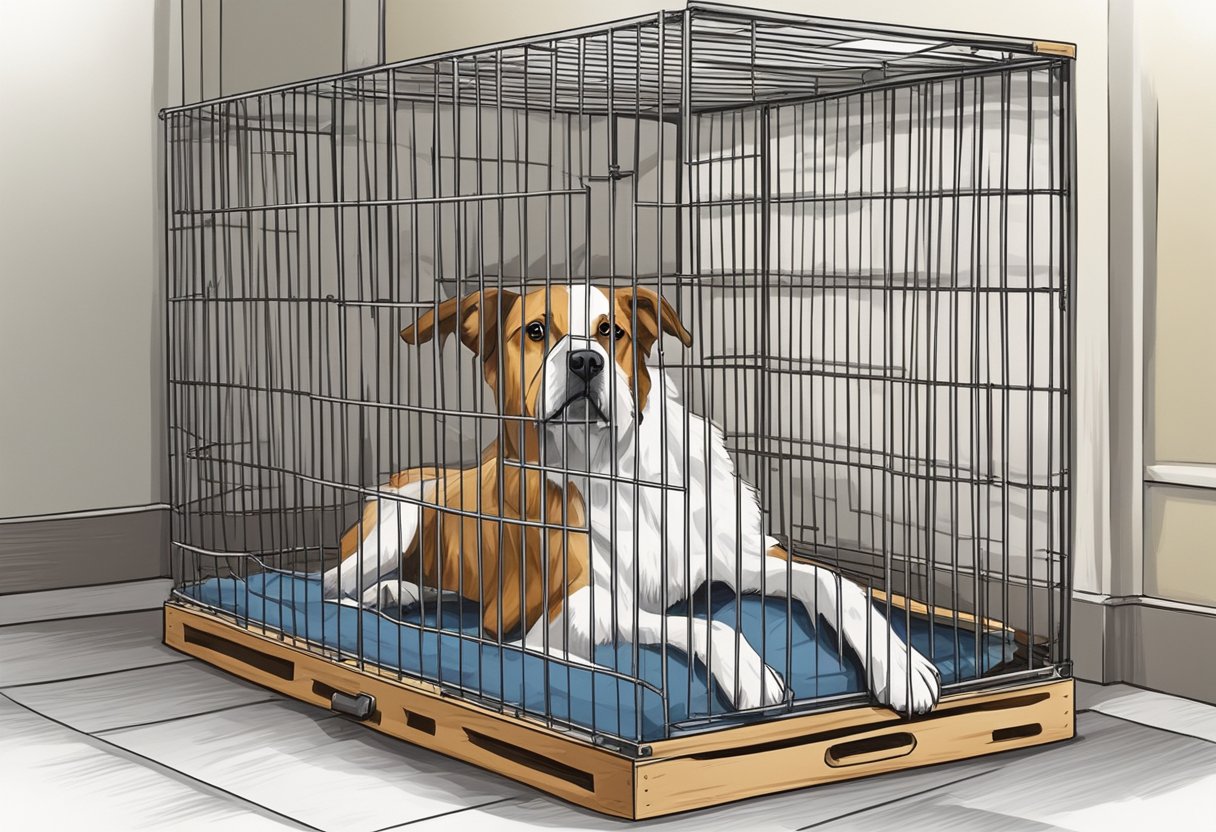
In any case, patience is key, as overcoming separation anxiety may take time and consistent effort on your part.
To successfully crate train a dog with separation anxiety, you’ll want to employ various tips and techniques to make the experience as smooth as possible.
This will include creating a positive association with the crate, gradually increasing the time spent in the crate, and introducing distractions to reduce stress.
You can trust that with persistence and dedication, your dog will feel more at ease in their crate and you both will be able to enjoy some peace of mind.
Understanding Separation Anxiety in Dogs
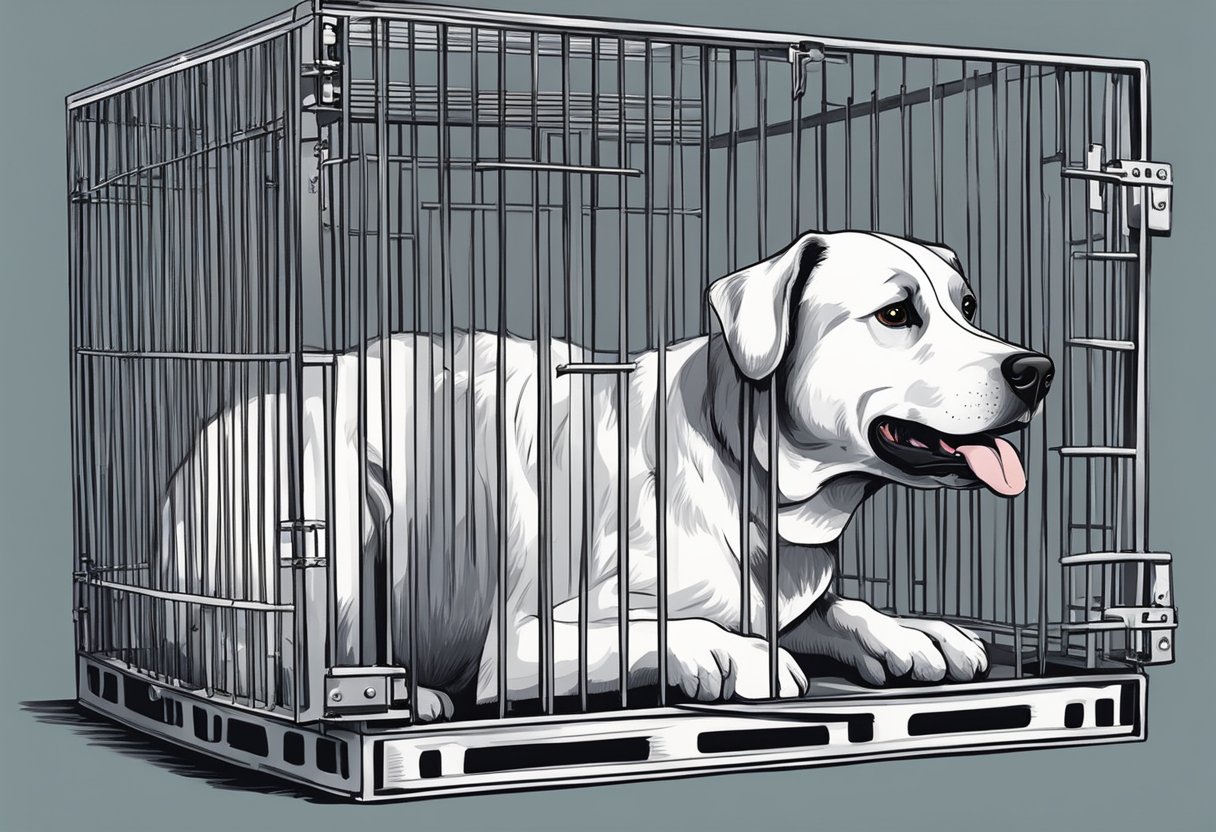
Separation anxiety in dogs is a serious issue where your dog experiences stress and fear when separated from you or left alone.
Let’s break down the signs of separation anxiety in dogs and explore its causes.
Signs of Separation Anxiety in Dogs
If your dog has separation anxiety, you’ll likely notice some of the following behaviors:
- Trembling: Your dog may shake or tremble when you’re getting ready to leave.
- Whining, howling, or barking: Listen for excessive vocalizations after you’ve left or while you’re away.
- Scratching, chewing, or digging: Destructive behaviors, especially around doors or windows, can indicate distress.
- Crying: Your dog may show signs of distress, like crying, when you’re not around.
- Excessive salivation: Drooling more than usual can be a sign of anxiety in your furry pal.
- Misbehavior: Some dogs may exhibit misbehavior, like going to the bathroom indoors, when they’re stressed.
Causes of Separation Anxiety
There are various factors that can contribute to separation anxiety in dogs:
- Past trauma: Dogs who were abused or neglected as puppies may be more prone to separation anxiety.
- Personality: Some dogs are naturally more high-strung and prone to anxiety.
- Changes in routine: Sudden changes in your schedule or a move to a new environment can trigger anxiety in your pup.
- Loss of companionship: If your dog has recently lost a family member or another pet, they may develop anxiety when left alone.
Understanding the signs of separation anxiety and its causes can help you better manage your dog’s anxiety and lead to more successful crate training.
The Concept of Crate Training

Crate training is a valuable process that can help your dog feel secure and comfortable, especially when dealing with separation anxiety.
By teaching your pooch to see the crate as their personal safe haven, you can alleviate their stress when you’re away from home.
Crate as Den
In the wild, dogs naturally seek out small, enclosed spaces to serve as their den.
This instinct can be harnessed through crate training, essentially turning the crate into your dog’s “den” in your home.
This cozy space will become their go-to spot for napping, chewing on toys, or just relaxing.
It’s important to make the crate feel inviting and comfortable so your dog is at ease spending time in it.
Choosing the Right Size Crate
Picking the right size crate is crucial for successful crate training.
Your dog should have enough room to stand up, turn around, and lie down comfortably.
If the crate is too large, your canine companion may not feel secure.
On the other hand, crates that are too small can impede your dog’s movement and cause stress.
Here’s a general guideline for crate sizes by weight:
- Small (up to 25lbs): 18-22 inches
- Medium (26-50lbs): 24-30 inches
- Large (51-90lbs): 36-42 inches
- Extra Large (91lbs and above): 48-54 inches
Remember, it’s important to take your dog’s breed-specific needs into account, especially in terms of height and length.
Adjust the crate size accordingly for the most effective results.
Preparing for Crate Training
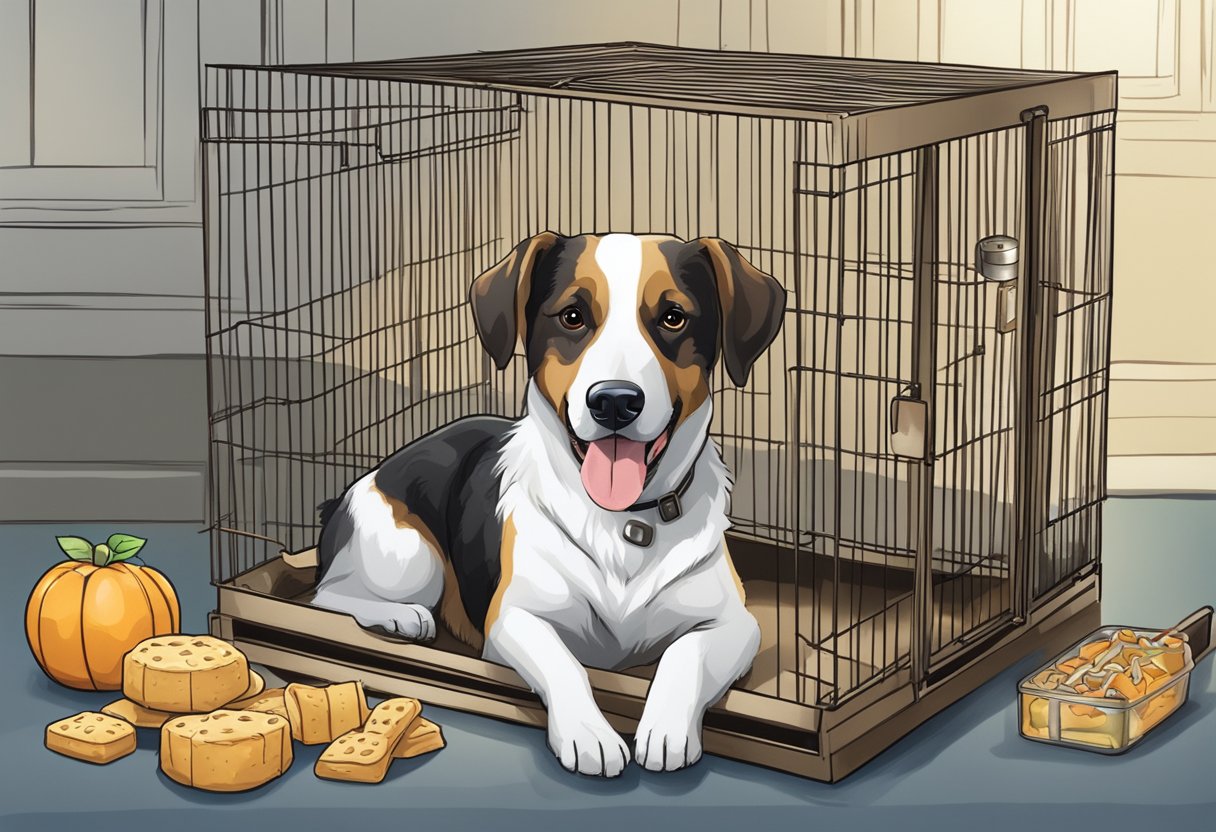
Creating a Safe Space
First things first, you’ll want to create a safe and comfy space for your dog.
Choose a crate that’s the right size for your pooch—large enough for them to stand up, turn around, and lay down comfortably.
Make the crate inviting by adding a comfy bed, soft blankets, and maybe even one of your worn shirts for a familiar scent.
Place the crate in a quiet room or corner of your home to help minimize distractions and help your dog feel more at ease.
Proper Exercise
A key component in crate training for dogs with separation anxiety is proper exercise.
Make sure your furry friend gets their daily dose of physical activity before confining them to their crate.
A tired dog is more likely to settle down calmly in their crate.
Try to schedule consistent walks, playtime, or even a quick jog with your dog each day to ensure they’re sufficiently stimulated and exercised prior to crate time.
Creating a Routine
Consistency is crucial in helping your dog adjust to crate training, especially if they have separation anxiety.
Start by feeding your dog their meals inside the crate to create a positive association with the space.
You can also offer special treats or toys that they only get when in their crate.
Establish a regular routine for crating, such as when you leave for work or go to bed at night.
Over time, your dog will learn to associate the routine with the crate, making the transition easier for them.
Remember, patience and consistency are your best friends when working with a dog that struggles with separation anxiety.
By creating a safe space, providing proper exercise, and establishing a reliable routine, you’re setting your dog up for success in their crate training journey.
Which crate is ideal for dogs with separation anxiety?
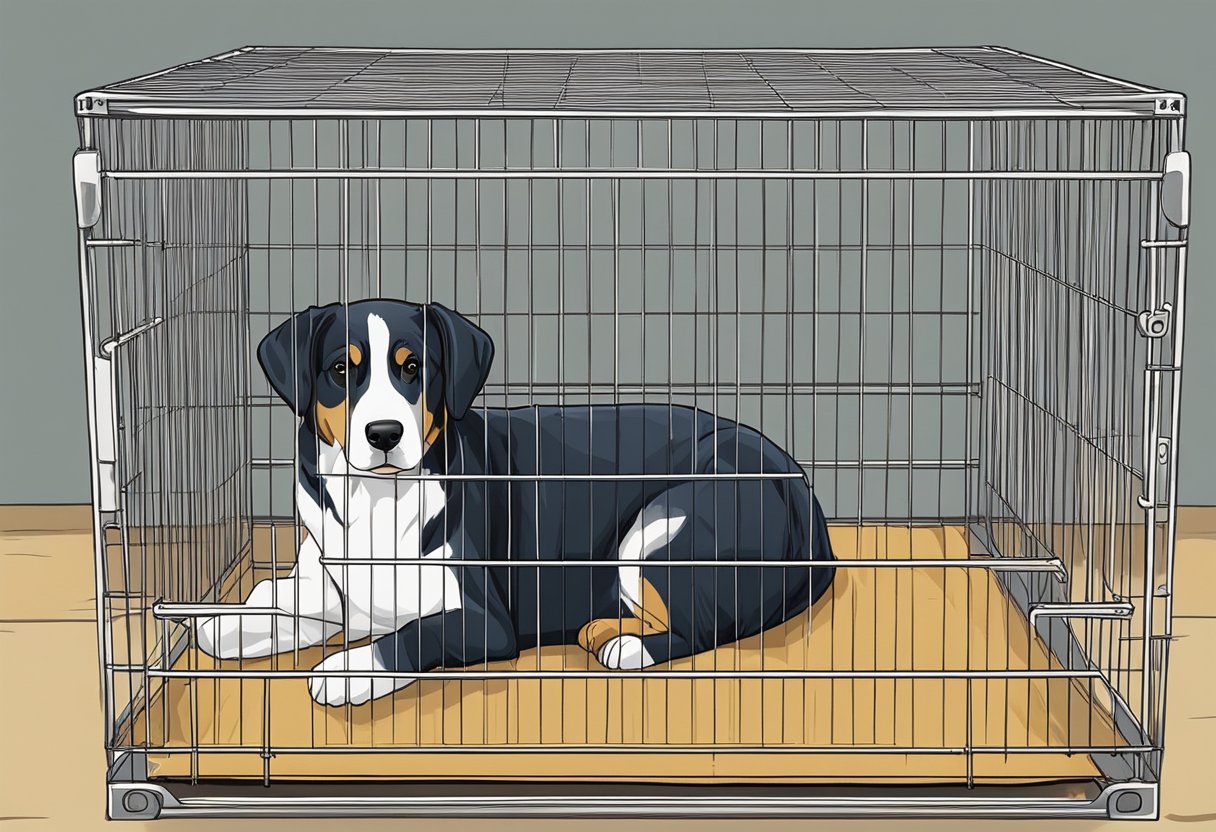
When it comes to selecting the perfect crate for your dog with separation anxiety, you need to choose one that provides a comfortable and safe space for your furry friend.
Our top pick for this is the Impact crate designed specifically for anxious dogs. Check out this Impact Dog Crate Review for more info.
Here are some other top-rated crates that may help your dog feel more secure and calm:
- ProSelect Empire Dog Crate: This crate is the best overall choice, as it’s made from 20-gauge reinforced steel bars, ensuring your canine companion remains contained. It also comes with a removable tray for easy cleaning and casters for convenient mobility.
- Frisco Ultimate Heavy Duty Steel Metal Single Door Dog Crate: Another excellent option, this durable and sturdy crate offers security and peace of mind for both you and your dog, making it an ideal selection for pups with separation anxiety.
- Frisco Indoor & Outdoor 3-Door Collapsible Soft-Sided Dog Crate: This versatile crate offers extra accessibility, making it easier for you to interact with your pooch. Additionally, its soft-sided design creates a cozy environment for your dog to retreat to when they’re feeling stressed.
- Petmate Two Door Top Load Dog & Cat Kennel: This kennel features a top-loading door, allowing you to easily check up on your dog without disturbing their safe space. The secure latches and ventilation make it a reliable option for dogs who may become anxious when left alone.
Keep in mind that the size of the crate should be appropriate for your dog.
They should have enough room to stand up, turn around, and lie down comfortably.
The goal is to create a cozy, secure space where your dog feels safe when you’re not around.
In addition to selecting the right crate, it’s crucial to incorporate proper crate training practices.
This involves gradually introducing your dog to the crate, rewarding them for entering it, and creating positive associations with this space.
This way, your dog is more likely to view the crate as their safe haven, reducing their feelings of separation anxiety.
Crate Training Techniques
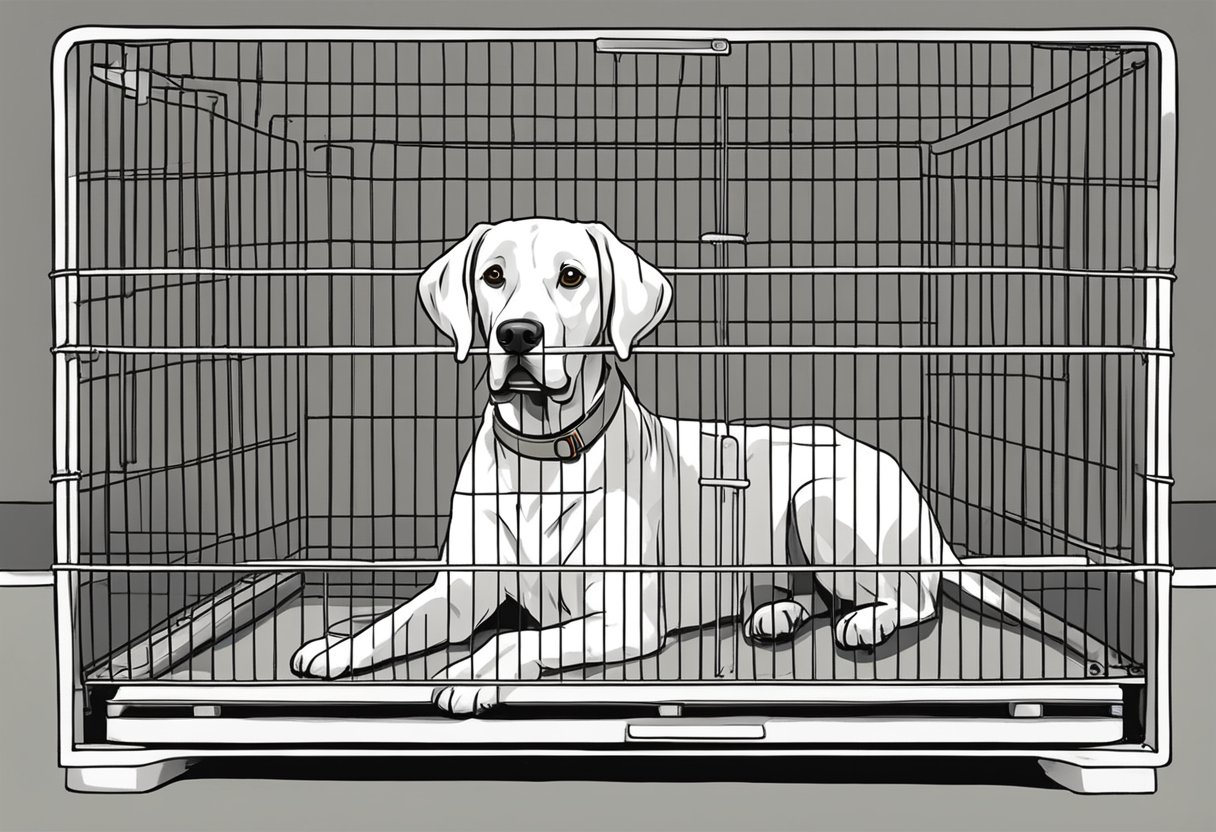
Positive Association and Reinforcement
To teach your dog that the crate is a safe and enjoyable space, it’s crucial to create positive associations.
Start by feeding your pooch their meals inside the crate and offering treats or toys when they show interest.
Gradually increase the amount of time they spend in their crate, always using positive reinforcement.
Praise and reward good behaviors, like entering the crate calmly or being quiet inside it.
Some helpful ideas for creating a positive environment in the crate include:
- Placing a comfortable bed or blanket inside
- Providing your dog’s favorite toys
- Giving special treats or chewable items to occupy them while they’re crated
Dealing with Whining and Barking
Whining and barking can be challenging behaviors to address during crate training, but with consistency and patience, your dog will learn that being quiet gets them rewards.
Whenever your dog starts barking or whining, ignore them until they quiet down.
Once they’re calm, treat and praise them. If the noise continues, you can use the obedience command “quiet,” and then reward their silence.
Remember to avoid scolding or yelling at your dog, as this can heighten anxiety and create a negative association with the crate. Instead, focus on reinforcing good behaviors.
Addressing Chewing and Scratching
For puppies and older dogs alike, chewing and scratching are often signs of stress or boredom.
To counteract these behaviors, provide your dog with appropriate chew toys, like Kongs or puzzle toys, to keep them entertained in the crate.
If chewing or scratching persists, you may need to revisit your crate training techniques to ensure your dog is comfortable and not feeling punished.
When you catch your dog chewing or scratching, redirect their attention to a toy and praise and reward them when they engage with it.
Dealing with Separation Anxiety During Crate Training
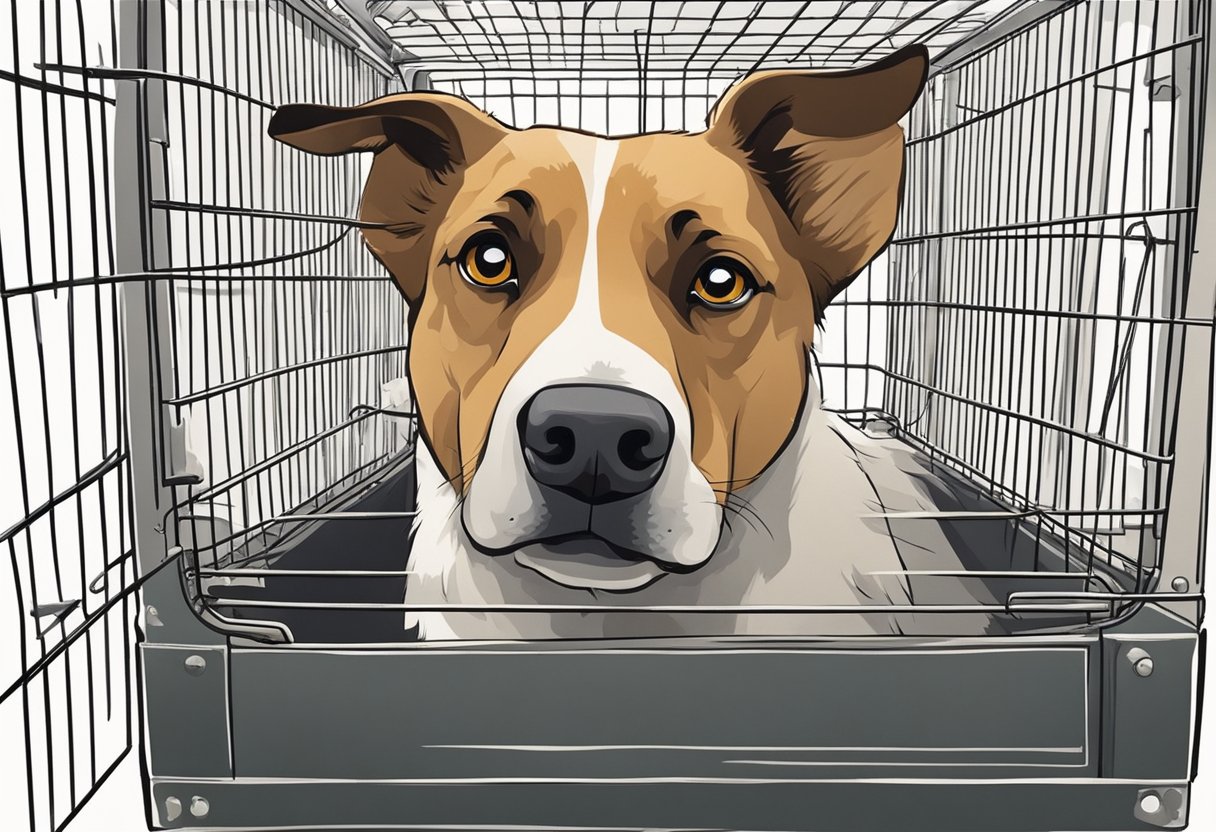
Desensitization Techniques
When it comes to crate training dogs with separation anxiety, desensitization techniques can be really helpful.
Start by placing your dog’s favorite toy or blanket inside the crate, making it more appealing.
Slowly increase the time your dog spends in the crate, always with something they enjoy, like a chew toy or a treat.
Professional Help for Serious Cases
Sometimes, separation anxiety in dogs can be severe, and crate training might not be enough.
In these cases, it’s a good idea to consult a professional trainer or a veterinarian.
They can assess your dog’s condition and suggest appropriate behavior modification therapy or medications when necessary.
A professional trainer can provide guidance on desensitization techniques and create a customized training plan for your dog.
If your dog’s separation anxiety seems to have an underlying medical condition or is causing extreme distress, a veterinarian can prescribe medications to help manage the anxiety.
Enriching Your Dog’s Crate Time

Using Toys and Puzzles
To keep your dog entertained and engaged while in their crate, introduce a variety of interactive toys and puzzle toys.
These not only help with boredom but also provide mental stimulation especially for a dog with separation anxiety.
For example, a stuffed Kong toy is an excellent option as it keeps your pup occupied for an extended period, trying to extract treats from the toy.
Rotating the toys is also essential to keep things interesting for your dog.
So, make sure you swap out their favorite toy once in a while to keep them entertained and looking forward to the new challenges.
Ensuring Human Interaction
While crate training a dog with separation anxiety, human interaction is also crucial.
Although it’s essential to give your dog some alone time in the crate, make it a point to spend quality time interacting with them when they’re not in the crate.
This helps your dog associate the crate with positive experiences, knowing they’ll still have your attention and love once they’re out.
Schedule regular playtimes and cuddle sessions throughout the day, and ensure someone in the family is around to engage with the pup when they’re not crated.
This balance of crate time and human interaction is vital for reducing your dog’s anxiety and promoting a positive crate experience.
Additional Tips and Tricks
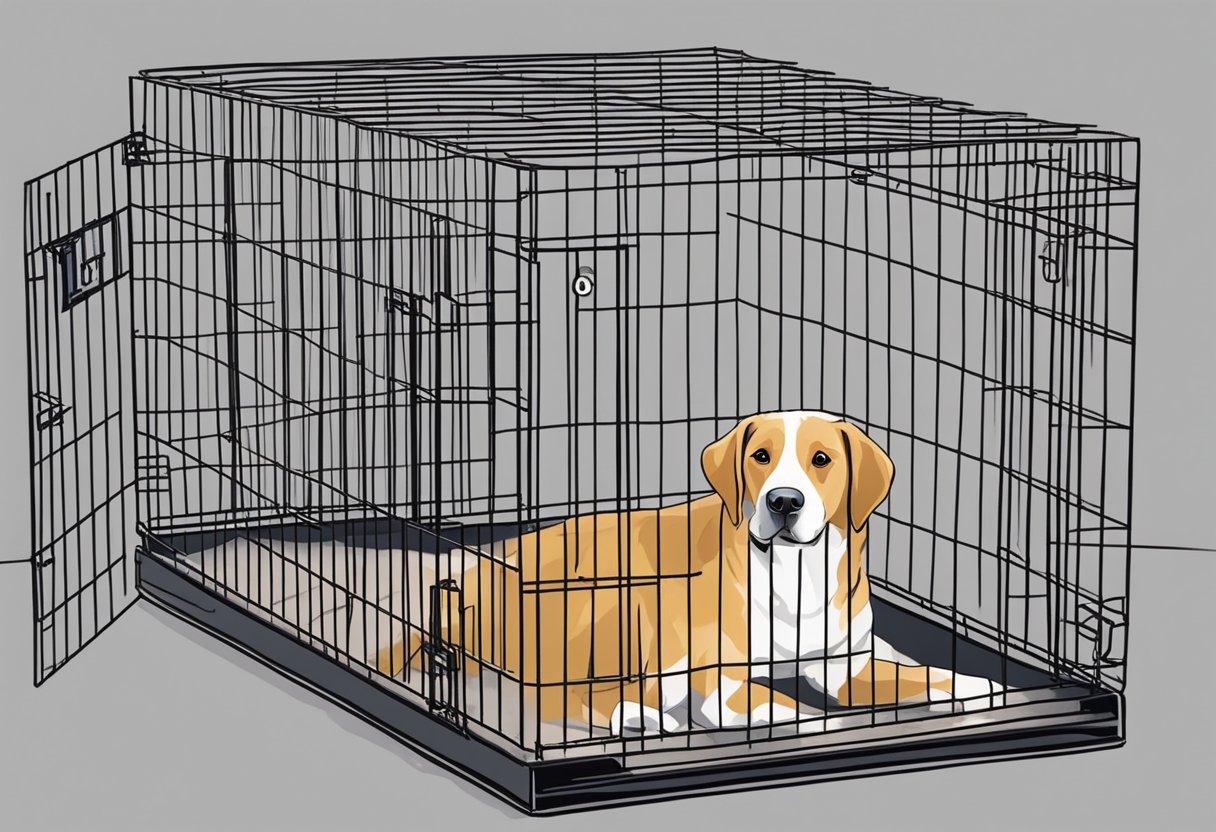
Besides crate training, there are other methods to help your dog with separation anxiety.
Obedience training can help build your dog’s confidence and establish you as the pack leader.
Consistency in commands and routines can make your pup feel more secure, which could reduce anxiety.
Consider finding a dog walker or pet sitter to keep your dog company when you’re not around.
This will not only give them a little break, but it also helps combat separation anxiety by keeping him occupied.
Alternatively, doggy daycare facilities provide a social environment where your dog can interact with other dogs, helping to develop a calm and confident demeanor.
Frequently Asked Questions
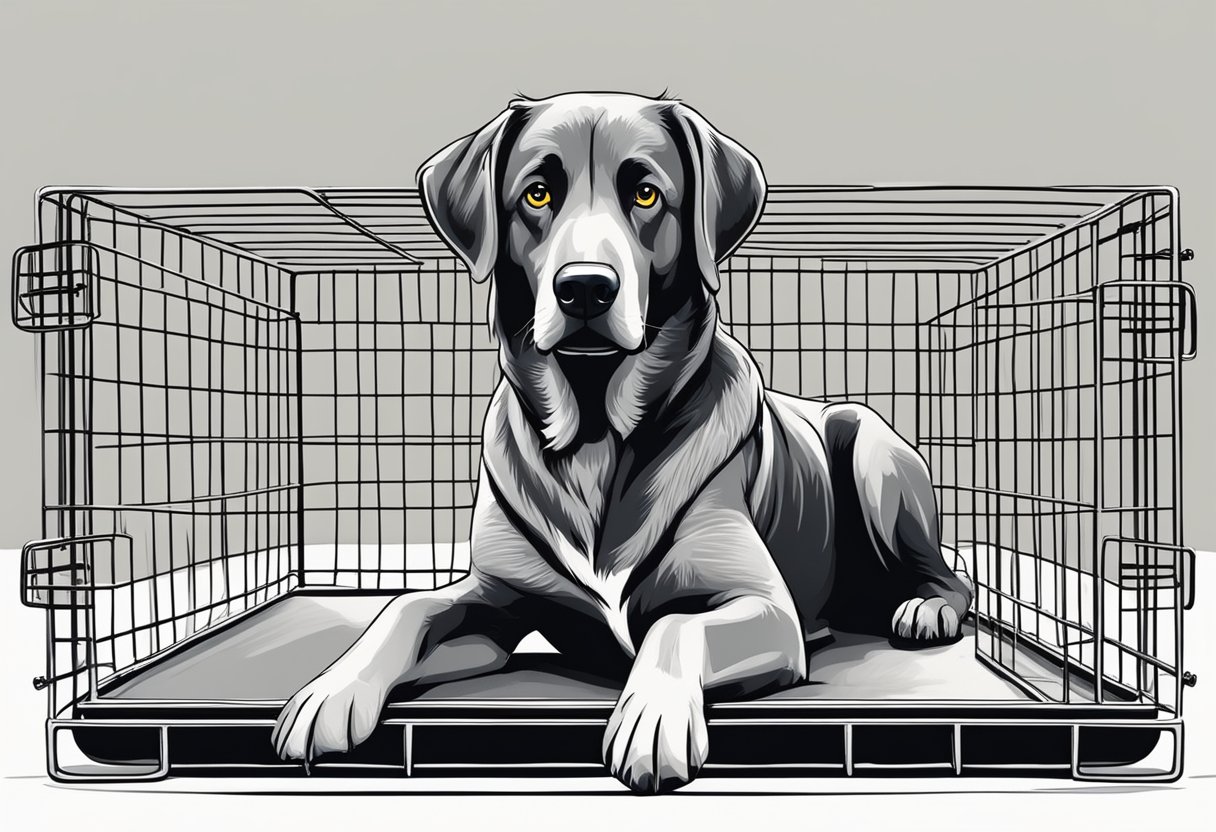
What is the best way to crate train a dog suffering from separation anxiety?
The key to crate training a dog with separation anxiety is to create a positive association with the crate.
Start by introducing your dog to the crate with treats and praise.
Make sure the crate is placed in a quiet area and has comfortable bedding.
Gradually increase the amount of time your dog spends in the crate, always making it a positive experience.
Keep your departures and arrivals low-key to avoid triggering their anxiety.
Remember that patience and consistency are important, and it may take time for your dog to feel secure in their crate.
How can I make my dog comfortable in their crate during the night?
To make your dog comfortable in their crate at night, try the following tips:
- Place the crate in your bedroom or nearby so your dog can feel your presence.
- Make the crate cozy with soft bedding and a familiar and comforting item, like a piece of clothing that has your scent on it.
- Establish a bedtime routine that includes a bathroom break, calming activities, and praise for entering the crate.
- Consider using a white noise machine or soft music to help drown out outside noises that may cause anxiety.
Remember that consistency is essential for helping your dog adapt to sleeping in a crate.
What medication can help a dog with separation anxiety during crate training?
Consult your veterinarian for medical advice if your dog is struggling with separation anxiety during crate training.
They may prescribe medications to help decrease anxiety and make the training more manageable.
Some potential medication options include Clomicalm, Reconcile, or benzodiazepines.
However, always follow your veterinarian’s recommendations, and be sure to use medication in conjunction with behavior modification techniques.
How can I help my adult dog adapt to crate training with separation anxiety?
Helping an adult dog with separation anxiety adapt to crate training involves patience, consistency, and positive reinforcement.
Start slowly by introducing your dog to the crate and using treats or praise to create a positive association with it.
Make the crate comfortable by adding familiar items, like blankets or toys.
Gradually increase the time your dog spends in the crate, ensuring that each experience remains positive.
Additionally, work on building your dog’s confidence and independence through training exercises and opportunities for socialization.
Don’t hesitate to consult a professional dog trainer or behaviorist if you need additional guidance or support during the crate training process.
